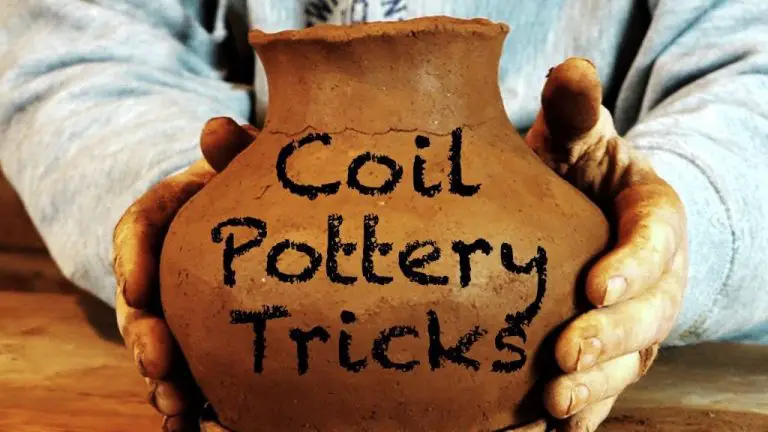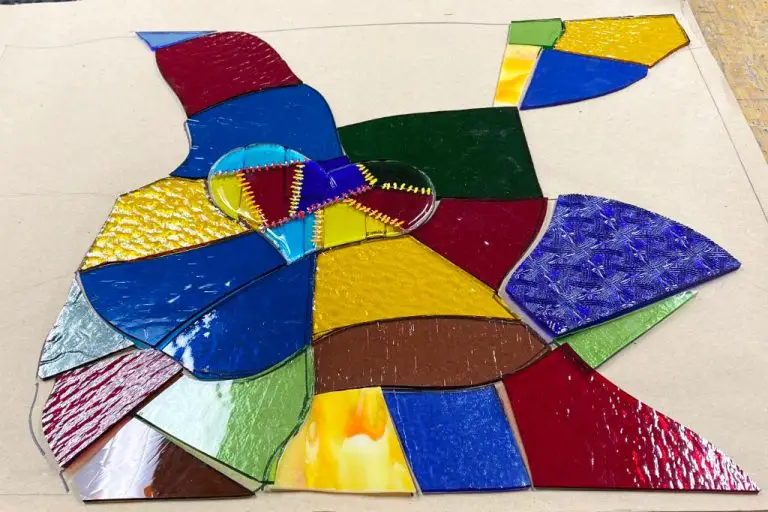How Do You Make A Clay Tennis Ball?
Clay is an ancient and versatile material that has been used for thousands of years to create both functional pottery and decorative art. While clay originates as soft, pliable earth composed of natural minerals, the intricate objects formed from it become permanently hard and durable when fired in a high heat kiln. Clay’s ability to be molded into endless shapes makes it a favorite of sculptors, potters, and crafters.
In this project, we will use polymer clay, a modern synthetic modeling compound, to handcraft a miniature replica of a tennis ball. If sculpted and painted carefully, the final clay ball will closely resemble the fuzzy green spheres used in tennis matches worldwide. Creating a faux tennis ball from clay allows us to make a customized art piece to display as decoration or to give as a gift to a tennis lover.
Gather Materials
The materials needed to make a clay tennis ball include:
- Air-dry clay – This is clay that air dries at room temperature without needing to be baked. Using air-dry clay makes the project simpler.
- Acrylic paints – Acrylic paint works well for painting clay. Make sure to have a variety of colors for detailing the tennis ball.
- Paint brushes – Smaller brushes will be needed for adding details like the felt and logo.
- Polymer clay gloss – Applying a polymer gloss after painting will give the clay ball a shiny, finished look.
Before starting the project, gather these supplies so you have everything you need ready to go. Select quality materials for best results.
Shape the Clay
Once you have gathered your clay, it’s time to shape it into a ball. Start by kneading the clay thoroughly with your hands until it is soft and pliable. Form the clay into a rough ball shape, rolling it between your palms. The clay should be about the size of a tennis ball, around 2.5-2.75 inches in diameter.
As you shape the ball, smooth the surface with your fingers to get rid of any cracks or indentations. Apply even pressure as you roll to create a uniform, spherical shape. Turn the ball continuously in your hands to smooth all sides.
After shaping the basic ball, set it aside and allow it to dry partially. The clay should be firm but still pliable. Partial drying helps hold the shape while adding details.
Add Details
To make your clay tennis ball look realistic, you’ll need to add some details that mimic an actual fuzzy tennis ball. Here are some tips for adding textures and designs:
Use clay modeling tools like sculpting knives, loop tools, or even toothpicks to add lines and grooves into the surface of the clay. These will mimic the seams and stitches on a real tennis ball. Press gently and drag tools across the clay to create shallow lines.
To make the fuzzy tennis texture, you can use a toothbrush, stiff-bristled brush, or even a fork. Press the bristles lightly into the clay and wiggle a bit to create an irregular, fuzzy look. Do this over the entire surface area. The clay may wrinkle a bit, but this adds to the realistic fuzzy texture.
You can also use a roller tool with a textured surface to roll over the clay, leaving behind a bumpy, fuzzy texture. Experiment with different textures for most realistic results.
Add any logos, text, or numbers that you want on your clay tennis ball with clay sculpting tools. Use a toothpick to scratch in any fine details.
Take your time adding textures and designs so your clay tennis ball looks like the real thing!
Bake the Clay
Once you have shaped and detailed your clay tennis ball, it’s time to bake it to harden and set the clay. Refer to the package instructions for exact baking times and temperatures. In general, you’ll want to bake clay at 275°F for 15-20 minutes per 1/4 inch thickness.
Preheat your oven to the recommended baking temperature. Place your clay ball on a baking sheet or baking dish. Bake according to package directions, checking frequently toward the end to prevent overbaking. The clay should be firm but not burnt. Carefully remove from the oven using oven mitts.
Allow the clay to cool completely before handling. This can take 30 minutes or longer. Cooling is a critical step, as handling clay before it has fully cooled can cause cracks or imperfections. Be patient and let the clay tennis ball rest until it reaches room temperature.
Once cooled, your clay tennis ball sculpture will be ready for finishing touches like paint and gloss. The baking process hardens the clay fully so it won’t deform during play.
Paint the Clay
Once the clay has cooled completely after baking, it’s time to paint it. When painting a clay tennis ball, it’s best to use acrylic paints. Start by base coating the entire ball with a lush grass green color. You want the green to be fairly dark to mimic the fuzzy felt of a real tennis ball.
After the base color has dried, use a small brush to add on the detail lines in bright white acrylic paint. Carefully paint on two straight lines crossing one another to create the tennis ball seam shapes. You can look at a real tennis ball for reference. Add a white band around each end of the ball to replicate how actual tennis balls have a white edge on each pole.
Make sure to let the white acrylic details fully dry before moving to the next step. The paint needs to set completely to accept the gloss finish that will be applied over top.
Apply Gloss
Once the paint on your clay tennis ball is completely dry, it’s time to apply a glossy top coat to seal in the color and give your creation an attractive, polished sheen.
When working with air-dry modeling clay, it’s best to use a water-based polyurethane sealant or an acrylic varnish. These liquid finishes will dry clear and provide durable protection for your painted clay. Before starting, carefully read the instructions on the gloss product you select, as drying times can vary.
To apply the gloss:
- Place the painted clay ball on a sheet of newspaper or other protected work surface.
- Using a soft paintbrush, gently brush 1-2 thin coats of gloss over the entire surface of the ball. Let dry completely between coats.
- Allow the final coat to cure fully, which may take 24 hours or more. The clay should feel completely hard and smooth when dry.
Once cured, the gloss finish will help keep your homemade clay tennis ball looking vibrant and prevent chipping or fading over time. The glossy coating also adds a touch of realism, making it look like a store-bought ball pulled right from its packaging.
Display Clay Ball
Once your clay tennis ball is completely finished, you will want to display it in a way that keeps it looking its best. Here are some tips for properly displaying your clay tennis ball artwork:
Stand on small stand or mount on base – Attach your clay tennis ball to a small stand or mount it on a base. This will hold it upright and prevent it from rolling around or falling over. A simple stand can be made from wood, plastic, or metal. Or, affix your clay ball to the top of a decorative base, like a block of wood or a glass cube.
Keep out of direct sunlight to preserve colors – If your clay tennis ball is painted or stained, be sure to keep it somewhere out of direct sunlight. UV exposure can cause painted clay to fade over time. Find an indoor spot for display that is not too close to a window.
Troubleshooting
Making clay tennis balls is fun, but you may run into some issues during the process. Here are some common problems and how to fix them:
Cracks During Drying
If your clay ball develops cracks as it dries, the clay likely wasn’t kneaded thoroughly enough. Air pockets form during improper kneading, which expand as the clay dries and cause cracks. To avoid this, knead the clay until it’s completely smooth and pliable before shaping your tennis ball. The clay should not have any lumps or dry spots.
Paint Scratches Off
If the paint scratches off the surface easily, you may not have applied enough gloss finish. The gloss seals in the paint and protects the clay ball. Apply 2-3 thin layers of gloss, allowing it to dry fully between coats. Gently sand any rough spots on the final coat before displaying the finished clay ball.
Colors Fade Over Time
Clay is porous, so colors can fade with exposure to light and air over many months/years. To help the paint last longer, make sure to use high-quality acrylic paints intended for clay. Apply the paint in thin layers and allow it to dry fully between coats to seal in the pigment. Adding a gloss finish will also help protect the painted design.
Conclusion
Making a clay tennis ball can be a fun and creative project with some patience and practice. To summarize the process, first gather the necessary materials – air-dry or polymer clay, acrylic paints, gloss varnish, clay sculpting tools, etc. Next, roll and shape the clay into a sphere about the size of a tennis ball. Add details like the furrowed seam and lettering using sculpting tools. Carefully bake or let the clay air dry completely so it hardens. Paint the ball with acrylic paints in realistic tennis ball colors, then apply a gloss varnish to give it a shiny, finished look. Your customized clay tennis ball can now be proudly displayed or given as a handmade gift. The basic steps can be adjusted to make clay balls in varying sizes, textures, and designs.
Working with clay allows for lots of creativity, so don’t be afraid to experiment. Add numbers, initials, patterns or other personalized elements. Try a crackled texture using a mix of liquid clay. With some practice and imagination, you’ll be crafting unique clay tennis balls to cherish.





